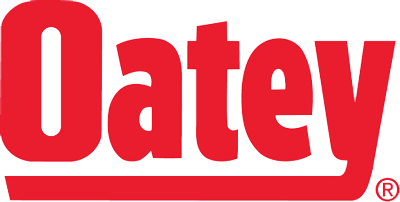Story at a glance:
- The recent construction of the Grand Hyatt Nashville included MODA supply boxes.
- MODA supply boxes installed throughout the 591-room luxury hotel helped to ensure uniform installations and support a tight construction schedule.
In today’s construction landscape, time and resources are stretched thin. Compressed schedules, labor shortages, and the rising cost of materials are driving demand for smarter systems that help streamline workflows without compromising performance. Nowhere is this more evident than in plumbing, where even minor inefficiencies during rough-in and finish phases can compound across large-scale projects.
One increasingly adopted solution is the modular supply box, a compact assembly combining water supply valves, drains, and mounting systems into a single unit. These components allow plumbing systems to be roughed in faster and more consistently while reducing job site waste and eliminating several finish-phase steps.
As the industry shifts toward more industrialized construction methods, supply box systems are proving to be a practical tool for improving efficiency across residential, commercial, and hospitality environments.
Rethinking the Rough-In
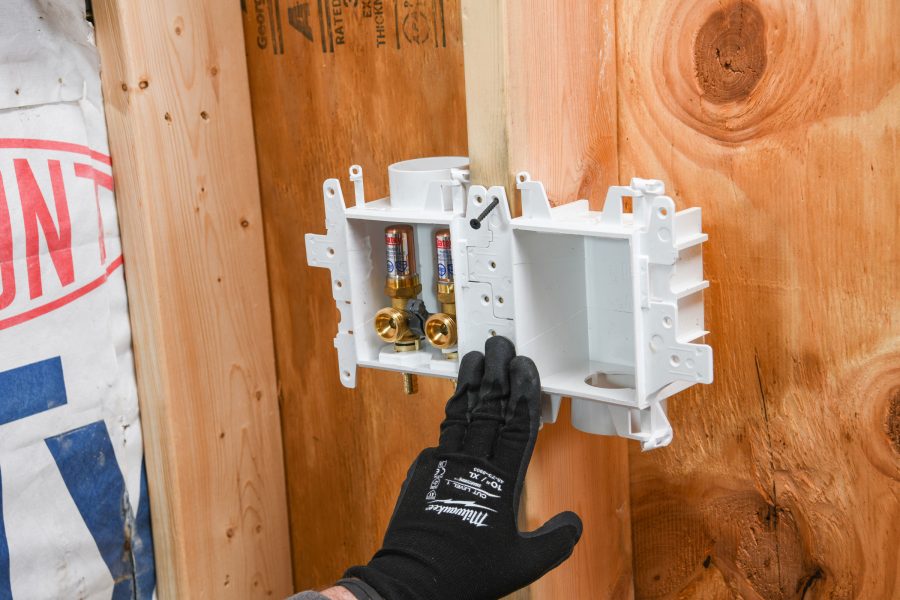
Photo courtesy of Oatey Co.
Traditional plumbing installations rely heavily on stub-outs, where copper or PEX piping extends from walls and is capped until fixtures can be installed. This approach introduces multiple inefficiencies. Installers often have to wait for the wall to be finished before returning to cut off the stub-out, drain the water, install valves, and complete the finish work. Each of these steps adds minutes per fixture. In projects with hundreds of units, these minutes can add hours of extra labor.
The Oatey MODA supply box system eliminates this process. Valves for toilets, sinks, and other fixtures are installed during the second rough-in stage, before drywall goes up. This allows plumbers to finish supply-side work with confidence that the system has already been tested.
When it comes time for fixture installation, the installer simply connects the supply lines to the valve already in place. The result is a streamlined workflow with fewer delays, fewer trips back to the unit, and less exposure to post-drywall plumbing complications.
This approach proved effective in the recent construction of the Grand Hyatt Nashville, where MODA supply boxes were installed throughout the 591-room luxury hotel to ensure uniform installations and support a tight construction schedule. The system’s flexibility helped reduce labor, simplify coordination among trades, and accelerate project delivery without sacrificing quality.
Installation Efficiency by Design
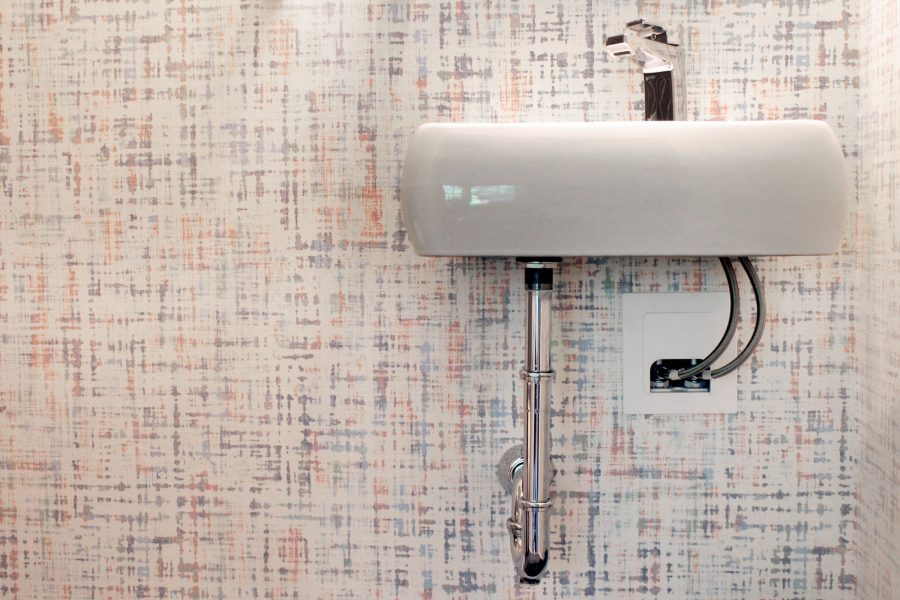
Photo courtesy of Oatey Co.
These supply box systems are built for quick installation. They offer multiple mounting configurations, including snap-together boxes that can be secured with just two screws. Integrated flanges and angled nail slots support installation in both wood and metal framing.
Because the boxes are compact and flexible, installers don’t need to cut additional blocking or create custom supports to mount them securely. Each component, from bracket design to valve accessibility, is engineered to reduce friction during installation.
A fully modular design allows multiple boxes to be snapped together on a single bracket, enabling flexible water supply, drain, and auxiliary combinations in one organized location. The unified platform accommodates a range of applications, including lavatory, kitchen, washing machine, gas, and ice maker setups. Despite these varying purposes, all configurations use the same mounting bracket and snap-fit system, simplifying product specification and reducing SKUs onsite.
Compatibility with various valve types and inlet connections further enhances efficiency. Supply boxes are available with quarter-turn valves in multiple inlet types such as CPVC, copper, PEX-a and PEX-b. This allows the system to match various plumbing designs without requiring field modifications.
Oatey’s MODA system features LocPin technology, which allows valve replacement without damaging finished walls. Thanks to the plumbing valve’s two-piece design, no drywall needs to be cut during servicing. The technician simply removes the faceplate and disengages the copper LocPin clip holding the valve top and tail pieces together, removing the former in need of replacement.
One universal faceplate is compatible with all MODA boxes. These customizable options allow the system to integrate neatly into the design of residential and commercial spaces, supporting both function and visual appeal.
Reducing Material Waste and Jobsite Footprint
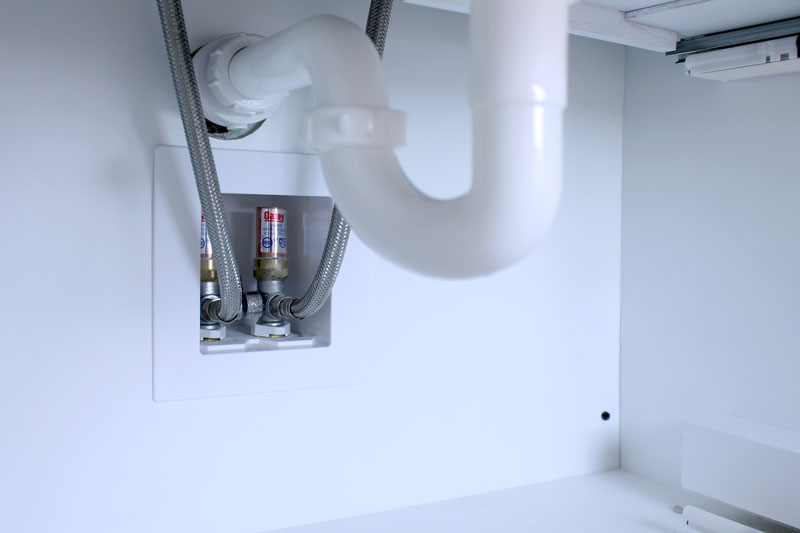
Photo courtesy of Oatey Co.
Plumbing systems that reduce excess materials and streamline installation can contribute meaningfully to overall project efficiency. Supply boxes help limit unnecessary waste by simplifying the connection process and reducing the number of components required onsite.
Traditional stub-out methods often involve cutting and discarding extra pipe lengths to accommodate wall finishes. With integrated supply boxes, those cuts are no longer needed. The valve is already set during rough-in, minimizing pipe waste and reducing the time spent adjusting connections later in the project.
Additional design advantages like shared drainage features for multiple fixtures can help reduce the total length of piping and the need for additional floor drains. Some box configurations include secondary funnels that allow for multiple discharges, like from a water softener or HVAC condensate line. This minimizes connections into the DWV system and reduces drain layout complexity.
In many installations fewer mounting materials are required as well. Because the boxes are self-contained and designed to fasten directly to framing, the need for extra blocking or custom supports is reduced. These efficiencies, while simple in execution, can scale significantly across large developments and contribute to a more thoughtful use of resources.
Improving Layout Flexibility and Space Efficiency
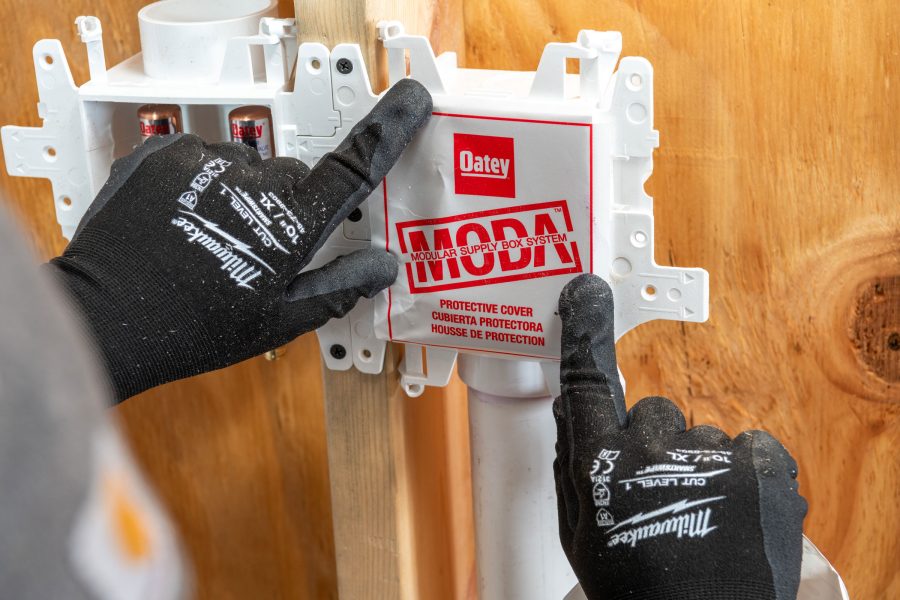
Photo courtesy of Oatey Co.
Beyond time and material savings, the compact footprint of supply boxes enables more efficient use of space. Traditional stub-outs protrude several inches from the wall, potentially interfering with fixture installations or creating visible clutter beneath sinks.
A recessed box allows fixtures like pedestal sinks or compact vanities to sit flush against the wall. This is particularly useful in urban multifamily housing or hospitality settings where aesthetics and space optimization are priorities. For kitchen appliances like ranges or dishwashers gaining even one inch of space by eliminating a protruding valve can allow tighter installs and more flexibility in layout.
The consolidated location of valves and drains within a supply box also supports better usability over the life of the building. Should a leak occur, occupants or maintenance personnel can quickly shut off the nearby valve without searching for a remote shutoff. This can prevent water damage and reduce emergency intervention time.
A Smarter Way Forward
As the construction industry evolves, there is a growing emphasis on solutions that deliver on multiple priorities at once. Systems that simplify installation, reduce labor demands, and support cleaner, more organized builds are becoming essential across project types.
When a single component can help streamline timelines, minimize on-site complexity, and reduce unnecessary material use, it brings added value to the entire process. These integrated solutions represent a practical step forward for professionals committed to building smarter and more efficiently.


